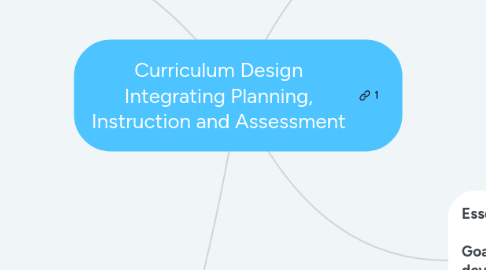
1. Progressivism Goals: To assist students in learning through their interests. Focus is on social living and active learning.
1.1. Planning:
1.1.1. Find ways for students to share their ideas
1.1.2. Make a commitment to incorporating student voice and student choice.
1.1.3. determine the kind of learners teachers are working with
1.1.4. Equal opportunity for all students to learn
1.2. Instruction:
1.2.1. Teach students students what it means to work in a group
1.2.2. Students are asking and answering their own questions
1.2.2.1. Building Self-Monitoring Skills, Self Efficacy, and Metacognition
1.2.3. Create an environment that is enjoyable and engaging
1.2.4. Adapting and responding to student needs to provide a challenge for learners.
1.2.5. Teacher acts in the role of facilitator
1.2.6. scaffolding learning
1.2.7. Transparency of goals- students have a clear understanding of explicit criteria
1.3. Assessment:
1.3.1. Pushing thinking beyond the box
1.3.2. Tasks will involve collaboration
1.3.3. Assessment for learning
1.3.4. Assessment is used as feedback for instruction as well as learning
2. Reconstructionism Goals: To assist students in learning about the problems in society and prepare them for future reform. The teacher is a change agent and director.
2.1. Planning:
2.1.1. Connecting curriculum to social and society
2.1.2. consideration of morals and needs of society
2.1.3. Connecting prior learning with cultural perspectives
2.1.4. equal opportunity
2.1.5. Blending of subjects to combine curricular outcomes
2.2. Instruction:
2.2.1. Building Self-Monitoring skills in students so they are aware of when and how to use skills
2.2.2. Developing cognitive skills through social interactions
2.2.2.1. Problem solving with real world problems and contexts
2.2.3. Creating expectations to guide students
2.2.4. Facilitate internal motivation- learning continues beyond the classroom and course
2.2.5. Scaffold learning with connection to realistic context and problems
2.3. Assessment:
2.3.1. "used as a part of instruction to support and enhance learning" (p. 4, Shepard)
2.3.2. "Broader range of assessment tools is needed to capture important learning goals and processes" (p.8, Shepard)
2.3.3. High order thinking with the belief that all students can learn
2.3.3.1. Goal of having a deep understanding of learning goals that are connected to the student's prior knowledge and culture
2.3.4. On going process that includes students in the evaluation process
2.3.4.1. Providing feedback while monitoring student progress.
2.3.5. Assessment for learning
2.3.5.1. To promote growth in student learning, motivation, understanding, and skill development
3. Perennialism Goals: To assist students in developing rational thought. Connection is to classical subjects. Teaching of traditional values.
3.1. Planning:
3.1.1. Determine knowledge required to be transferred to students in a particular subject area.
3.2. Instruction:
3.2.1. Focus on the importance of reading and the mastery of knowledge and basic skills.
3.2.2. Reinforce universal ideas to solve problems.
3.3. Assessment:
3.3.1. Assess student rational thought
3.3.2. Mastery of content
3.3.2.1. test frequently to check
3.3.3. Use of high stakes testing for large scale accountability.
3.3.4. Assessment of learning
4. Essentialism Goals: To assist students in developing intellect through reading, writing, and math. Teacher is the authority.
4.1. Planning:
4.1.1. Each subject is planned individually. Subjects are disciplined and scholarly: math, science, biology, reading, writing, etc.
4.1.2. Take learning objectives and break into pieces to transfer in sequential order
4.2. Instruction:
4.2.1. Focus is on the direction of the teacher to impart skills and knowledge to the students. Teachers lecture, direct, demonstrate and students receive the knowledge selected as important by the teacher.
4.2.2. Learning is hierarchical
4.2.3. Teachers provide external motivation to students
4.3. Assessment:
4.3.1. Separate entity- instruction occurs and then assessment occurs to determine mastery
4.3.2. test frequently to assure mastery
4.3.2.1. testing=learning
4.3.3. Should assessments be uniformly administered?
4.3.3.1. Objective tests to sort pupils by abilitites
4.3.4. Testing is based on learning goals
4.3.5. Assessment of learning
4.3.5.1. Use of selected-response or constructed-response assessment strategies
